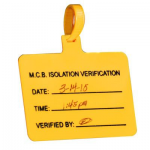Controls 78
New User
- Location
- Lansing MI
- Occupation
- Controls Technician
My employer says I am not qualified to verify the absence of voltage, but requires me to do work in a cabinet once a QEW verifies. I feel like if I am doing the work, I should verify it is in a safe state, not just overlock and trust someone else. Any OSHA or NFPA rulings on this?


